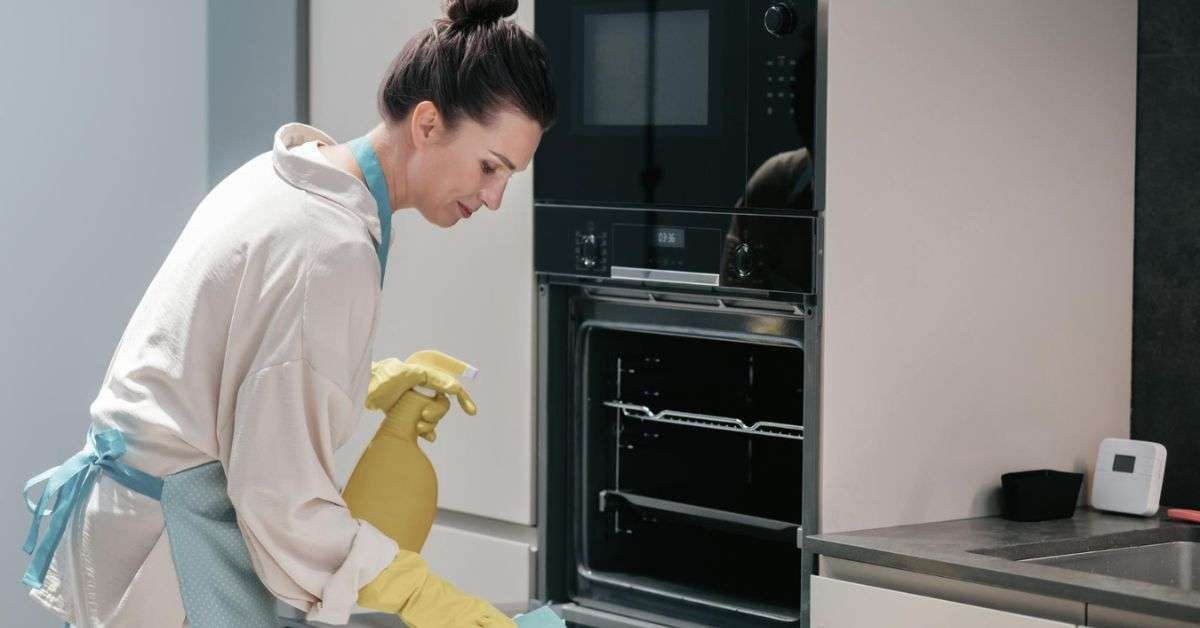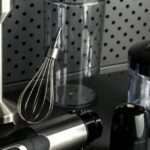Firstly, You have enough knowledge of how to clean your kitchen appliances. Cleaning kitchen appliances is an essential task that can help keep your kitchen clean, hygienic, and free from bacteria. From the refrigerator to the oven, there are several appliances in the kitchen that require regular cleaning.
Also Read
However, cleaning kitchen appliances can be challenging, especially if you’re not sure how to go about it.

The best way to clean kitchen appliances depends on the type of appliance you’re cleaning. For example, cleaning a refrigerator requires a different approach than cleaning a microwave or oven.
Additionally, the cleaning method you use may depend on the material the appliance is made of, such as stainless steel or plastic. In this article, we’ll cover the best methods to clean various kitchen appliances, step-by-step.
We’ll also provide tips on how to keep your appliances clean and well-maintained.
Understanding Your Kitchen Appliances
Identifying Different Types of Clean Your Kitchen Appliances
Before starting to clean kitchen appliances, it is important to know the different types of appliances that exist. Some common kitchen appliances include refrigerators, ovens, microwaves, dishwashers, and stoves.
Each appliance has its own specific cleaning requirements, so it is important to identify the type of appliance before starting the cleaning process.
Refrigerators come in different types, such as top-freezer, bottom-freezer, side-by-side, and French door. Each type has its own unique features and cleaning requirements.
For example, French door refrigerators have a double-door design that requires cleaning the seals around the doors to prevent food from getting stuck.
Ovens also come in different types, such as gas, electric, and convection. Gas ovens require cleaning of the burners and grates, while electric ovens require cleaning of the heating elements and oven racks.
Convection ovens require cleaning of the fan and filter to prevent grease buildup.
Knowing Their Functions
Knowing the functions of each appliance will also help in understanding how to clean them. For example, dishwashers have different compartments for different types of dishes, such as plates, cups, and silverware.
It is important to clean the filters and spray arms to ensure that the dishwasher is functioning properly.
Stoves come in different types, such as gas and electric. Gas stoves require cleaning of the burners and grates, while electric stoves require cleaning of the heating elements and drip pans.
It is important to clean the stove regularly to prevent grease buildup and avoid damage to the heating elements.
In summary, identifying the different types of kitchen appliances and knowing their functions is important for understanding how to clean them.
Each appliance has its own specific cleaning requirements, so it is important to follow the manufacturer’s instructions and use the appropriate cleaning products.
Preparation Before Cleaning
Before starting to clean kitchen appliances, it is essential to prepare and gather all the necessary supplies. This section will cover the two main sub-sections of preparation: Gathering Cleaning Supplies and Unplugging Appliances.
Gathering Cleaning Supplies
The first step in preparing to clean kitchen appliances is to gather all the necessary cleaning supplies. Here is a list of supplies that can be used to clean kitchen appliances:
- Microfiber cloths
- Dish soap
- Baking soda
- Vinegar
- All-purpose cleaner
- Glass cleaner
- Degreaser
- Scrub brushes
- Toothbrushes
- Rubber gloves
It is important to choose the right cleaning supplies for each appliance, as some may require specific cleaning products or methods.
For example, stainless steel appliances should be cleaned with a microfiber cloth and a stainless steel cleaner, while glass appliances should be cleaned with a glass cleaner and a soft cloth.
Unplugging Appliances
Before cleaning any kitchen appliances, it is crucial to unplug them from the electrical outlet. This safety measure will prevent any accidents or injuries from occurring during the cleaning process.
It is also important to make sure that the appliance is completely cool before cleaning it. For example, a stove should be turned off and allowed to cool down before cleaning the burners or the oven.
Similarly, a refrigerator should be unplugged and allowed to reach room temperature before cleaning the interior or the exterior.
By following these two sub-sections of preparation, Gathering Cleaning Supplies and Unplugging Appliances, one can ensure a safe and effective cleaning process for kitchen appliances.
Cleaning Refrigerators
Refrigerators are an essential appliance in any kitchen, but they can also be a magnet for spills, stains, and odors. To keep your fridge clean and hygienic, it’s important to clean it regularly.
In this section, we will discuss how to clean the interior and exterior of your refrigerator.
Interior Cleaning
Cleaning the interior of your refrigerator is essential to prevent bacteria and mold from growing. Here are some steps to follow:
- Remove all the food items from the fridge and place them in a cooler or a cool place.
- Take out all the removable shelves, drawers, and other accessories from the fridge.
- Mix a solution of water and dish soap in a sink or basin. Use a soft cloth or sponge to clean the shelves, drawers, and other accessories. Rinse them thoroughly with water and dry them with a clean towel.
- Use a mixture of baking soda and water to clean the interior of the fridge. Mix one tablespoon of baking soda with one quart of water. Use a soft cloth or sponge to clean the walls, ceiling, and floor of the fridge. Rinse with water and dry with a clean towel.
- Place an open box of baking soda in the fridge to absorb any odors.
Exterior Cleaning
Cleaning the exterior of your refrigerator is important to maintain its appearance and prevent the accumulation of dirt and grime. Here are some steps to follow:
- Unplug the fridge and move it away from the wall.
- Use a soft cloth or sponge to wipe down the exterior of the fridge with a mixture of water and dish soap. Rinse with water and dry with a clean towel.
- Use a mixture of vinegar and water to remove any stubborn stains or marks. Mix equal parts of vinegar and water in a spray bottle and spray the solution on the affected areas. Let it sit for a few minutes and then wipe it off with a clean cloth.
- Use a mild stainless steel cleaner to clean the stainless steel parts of the fridge. Follow the manufacturer’s instructions to avoid damaging the surface.
- Plug in the fridge and move it back to its original position.
By following these simple steps, you can keep your refrigerator clean and hygienic, ensuring that your food stays fresh and safe to eat.
Cleaning Ovens and Stoves
When it comes to cleaning ovens and stoves, regular maintenance is key to keeping them in good condition and ensuring they work efficiently. There are two types of cleaning that should be done on ovens and stoves: surface cleaning and deep cleaning.
Surface Cleaning
Surface cleaning should be done after each use of the oven or stove. This will prevent any buildup of grease or food particles, which can become difficult to remove if left for too long. Here are some steps to follow for surface cleaning:
- Allow the oven or stove to cool down before cleaning.
- Use a damp cloth or sponge to wipe down the surface of the oven or stove. For stubborn stains, use a gentle cleaning solution or baking soda.
- For stove burners, remove them from the stove and soak them in warm, soapy water. Use a soft brush or sponge to remove any buildup of grease or food particles.
- For oven racks, remove them from the oven and soak them in warm, soapy water. Use a soft brush or sponge to remove any buildup of grease or food particles.
Deep Cleaning
Deep cleaning should be done on ovens and stoves every few months, depending on how often they are used. This will help to remove any buildup of grease or food particles that may have accumulated over time. Here are some steps to follow for deep cleaning:
- For ovens, remove any loose debris from the bottom of the oven. Then, spray the inside of the oven with a cleaning solution and let it sit for a few minutes. Use a soft brush or sponge to scrub away any buildup of grease or food particles. Rinse the inside of the oven with water and dry with a clean cloth.
- For stove burners, remove them from the stove and soak them in warm, soapy water. Use a soft brush or sponge to remove any buildup of grease or food particles. Rinse the burners with water and dry them with a clean cloth.
- For stove tops, remove any loose debris from the surface. Then, spray the surface with a cleaning solution and let it sit for a few minutes. Use a soft brush or sponge to scrub away any buildup of grease or food particles. Rinse the surface with water and dry with a clean cloth.
By following these steps for surface and deep cleaning, ovens and stoves can be kept in good condition and work efficiently for years to come.
Cleaning Small Appliances
Small kitchen appliances like microwaves, toasters, blenders, and coffee makers are essential for daily use. However, they can be a breeding ground for bacteria and germs if not cleaned properly.
In this section, we will discuss how to clean these small appliances to keep them in good condition and ensure they are safe to use.
Microwave
Microwaves can easily become dirty due to food splatters and spills. To clean a microwave, follow these steps:
- Mix equal parts of water and vinegar in a microwave-safe bowl.
- Place the bowl in the microwave and turn it on for 5 minutes.
- Let the bowl sit in the microwave for an additional 5 minutes after the timer goes off.
- Carefully remove the bowl, and wipe the inside of the microwave with a damp cloth.
Toaster
Toasters can accumulate crumbs and debris over time, which can cause a fire hazard. To clean a toaster, follow these steps:
- Unplug the toaster and remove the crumb tray.
- Shake out any loose crumbs from the toaster.
- Use a soft-bristled brush to clean the inside of the toaster.
- Wipe the outside of the toaster with a damp cloth.
Blender
Blenders can be difficult to clean, especially if food has become stuck in the blades. To clean a blender, follow these steps:
- Fill the blender with warm water and a few drops of dish soap.
- Turn the blender on and let it run for 30 seconds.
- Rinse the blender thoroughly with warm water.
- Use a damp cloth to wipe the outside of the blender.
Coffee Maker
Coffee makers can become clogged with mineral buildup and mold if not cleaned regularly. To clean a coffee maker, follow these steps:
- Mix equal parts of water and vinegar in the coffee maker’s water reservoir.
- Run a brewing cycle.
- Run two cycles with plain water to rinse the machine.
- Wipe the outside of the coffee maker with a damp cloth.
By following these simple steps, you can keep your small kitchen appliances clean and in good condition. Remember to clean them regularly to ensure they are safe to use.
Maintaining Cleanliness
Keeping kitchen appliances clean is essential for maintaining their functionality and preventing the growth of harmful bacteria. In this section, we will discuss how to maintain the cleanliness in your kitchen appliances.
Regular Cleaning Schedule
One of the most important things to keep in mind when maintaining cleanliness is to establish a regular cleaning schedule. This will ensure that your appliances are always clean and in good working condition. Here are some tips on how to create a cleaning schedule:
- Create a list of all the appliances in your kitchen that need regular cleaning.
- Determine how often each appliance needs to be cleaned. For example, the refrigerator may need to be cleaned once a month, while the microwave may need to be cleaned once a week.
- Assign a specific day and time for each appliance to be cleaned. This will help you stay on track and avoid forgetting to clean an appliance.
- Make sure to follow the manufacturer’s instructions for cleaning each appliance. This will ensure that you don’t damage the appliance during the cleaning process.
Proper Usage
Another important factor in maintaining cleanliness is the proper usage of your appliances. Here are some tips on how to use your appliances properly:
- Avoid overloading your dishwasher or washing machine. Overloading can cause poor cleaning performance and may damage the appliance.
- Use the appropriate detergent for each appliance. For example, use dishwasher detergent in your dishwasher and laundry detergent in your washing machine.
- Clean up spills and food debris immediately. This will prevent bacteria growth and make cleaning easier.
- Use a microwave-safe cover when heating food in the microwave. This will prevent food splatters and make cleaning easier.
By following these tips, you can maintain cleanliness in your kitchen appliances and ensure that they function properly for years to come.
Conclusion of Clean Your Kitchen Appliances
Maintaining a clean and hygienic kitchen is essential for the health and well-being of your household. Regularly cleaning your kitchen appliances is key to keeping them in good working condition and preventing the buildup of dirt, grease, and bacteria.
When cleaning your appliances, it is important to follow the manufacturer’s instructions and use the appropriate cleaning products. For example, using abrasive cleaners or steel wool can damage the surface of stainless steel appliances.
In addition, it is important to regularly check the filters and vents on your appliances, such as the range hood and refrigerator, and clean or replace them as needed.
This will help ensure that your appliances are functioning efficiently and prevent potential safety hazards.
Overall, taking the time to properly clean and maintain your kitchen appliances will not only extend their lifespan but also contribute to a healthier and more enjoyable cooking experience.




